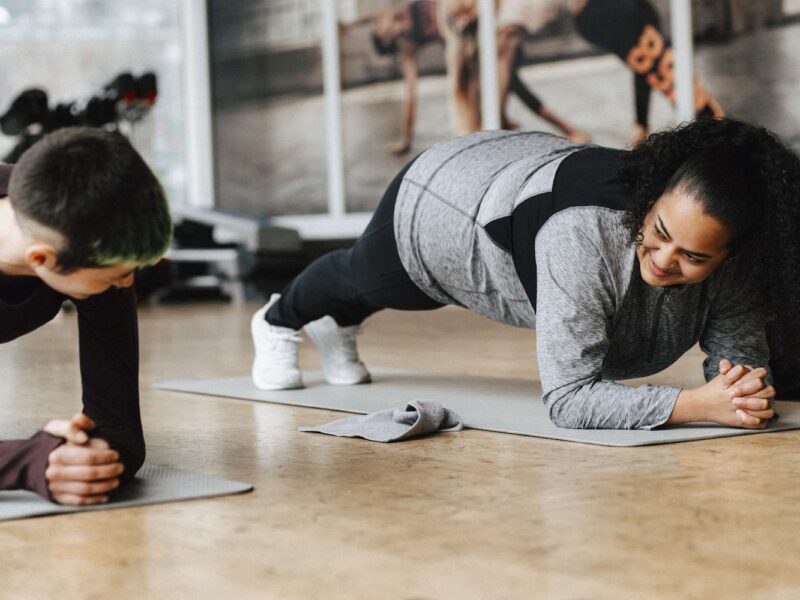Introduction: Mindful movement, the practice of engaging in physical activity with full awareness and presence, offers a unique opportunity to cultivate both physical and mental health. In this guide, we’ll explore the profound connection between physical exercise and mental well-being and how mindful movement can positively impact both.

- Understanding Mindful Movement:
- Mindful movement involves engaging in physical activity with focused attention and awareness of the present moment.
- It emphasizes tuning into the sensations of the body, the rhythm of the breath, and the surrounding environment while exercising.
- Mindful movement practices can include activities such as yoga, tai chi, walking meditation, and even traditional exercise modalities performed with mindfulness and intention.
- The Benefits of Mindful Movement for Mental Well-being:
- Stress Reduction: Mindful movement has been shown to reduce levels of stress hormones such as cortisol, promoting relaxation and a sense of calm.
- Improved Mood: Physical exercise stimulates the release of endorphins, neurotransmitters that promote feelings of happiness and euphoria, leading to improved mood and overall well-being.
- Enhanced Mental Clarity: Mindful movement encourages focus and concentration, helping to quiet the mind and improve mental clarity and cognitive function.
- Stress Resilience: Regular practice of mindful movement can enhance resilience to stress by improving coping mechanisms and emotional regulation skills.
- Increased Self-Awareness: Mindful movement fosters greater self-awareness by encouraging individuals to tune into their bodies, thoughts, and emotions during exercise.
- Better Sleep Quality: Engaging in physical activity, especially in the form of mindful movement, has been linked to improved sleep quality and duration, leading to better overall mental health.
- Incorporating Mindful Movement Into Your Routine:
- Start Small: Begin by incorporating short sessions of mindful movement into your daily routine, such as a 10-minute morning yoga flow or a mindful walk during your lunch break.
- Choose Activities You Enjoy: Experiment with different forms of mindful movement to find activities that resonate with you and bring you joy.
- Practice Presence: Focus on being fully present and attentive to the sensations of your body, the rhythm of your breath, and the sights and sounds around you during exercise.
- Use Breath as an Anchor: Use your breath as an anchor to guide your movements and help maintain present-moment awareness.
- Be Kind to Yourself: Approach mindful movement with a spirit of self-compassion and non-judgment, allowing yourself to fully experience each moment without criticism or expectation.
- Mindful Movement Practices to Try:
- Yoga: Yoga combines physical postures, breath-work, and meditation to promote strength, flexibility, and inner peace.
- Tai Chi: Tai chi is a gentle martial art characterized by slow, flowing movements and deep breathing, promoting relaxation and balance.
- Walking Meditation: Walking meditation involves walking slowly and deliberately while maintaining awareness of each step and the sensations of the body.
- Dance: Dancing mindfully allows individuals to express themselves creatively while connecting with their bodies and emotions.
- Cultivating a Mindful Mindset:
- Practice Gratitude: Cultivate a sense of gratitude for your body’s ability to move and for the opportunity to engage in physical activity.
- Embrace Imperfection: Let go of perfectionism and embrace the process of mindful movement as a journey of self-discovery and growth.
- Release Expectations: Release attachment to specific outcomes or goals and instead focus on the present moment experience of moving mindfully.
- Reflect on Your Experience: Take time to reflect on how mindful movement makes you feel physically, emotionally, and mentally, and notice any shifts or changes over time.
Conclusion: Mindful movement offers a powerful pathway to enhancing both physical and mental well-being by combining the benefits of physical exercise with the practice of mindfulness. By incorporating mindful movement into your daily routine and approaching physical activity with presence, intention, and self-compassion, you can experience a deeper connection to your body, mind, and spirit while reaping the numerous benefits for overall health and happiness. As you continue to cultivate a mindful mindset and embrace the practice of mindful movement, may you find greater joy, peace, and vitality in every step of your journey.










